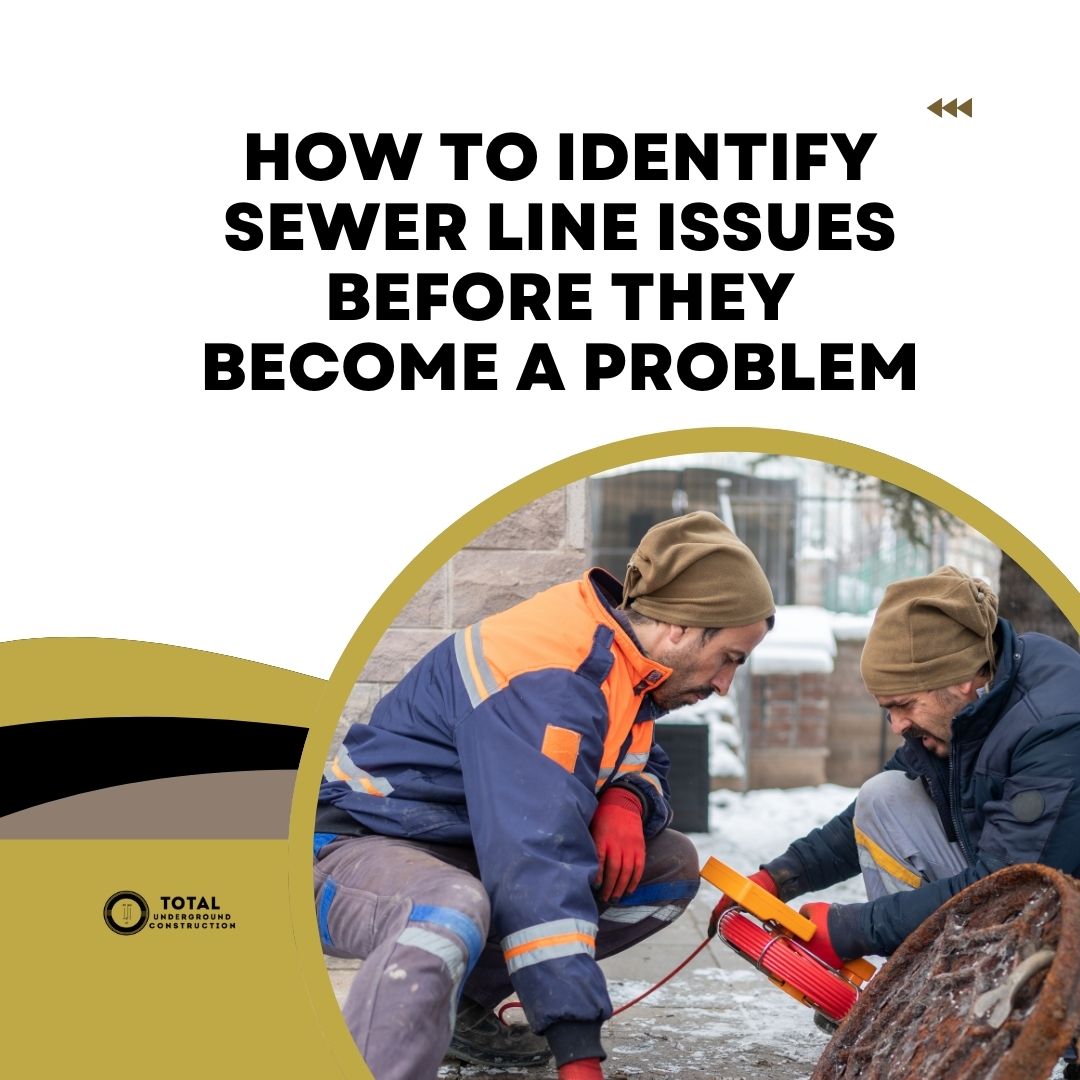Clogs are common in all residential properties. It is not a matter of if but when blockages form in your home plumbing system. Like any other plumbing issue, clogs are a nuisance. They interfere with drain flow, causing buildup, which, in turn, increases the risk of cross-contamination in the plumbing system.
Go to:
- Common Residential Plumbing Blockages and DIY Solutions
- Hire Total Underground Construction for Expert Blockage Solutions
Common Residential Plumbing Blockages and DIY Solutions
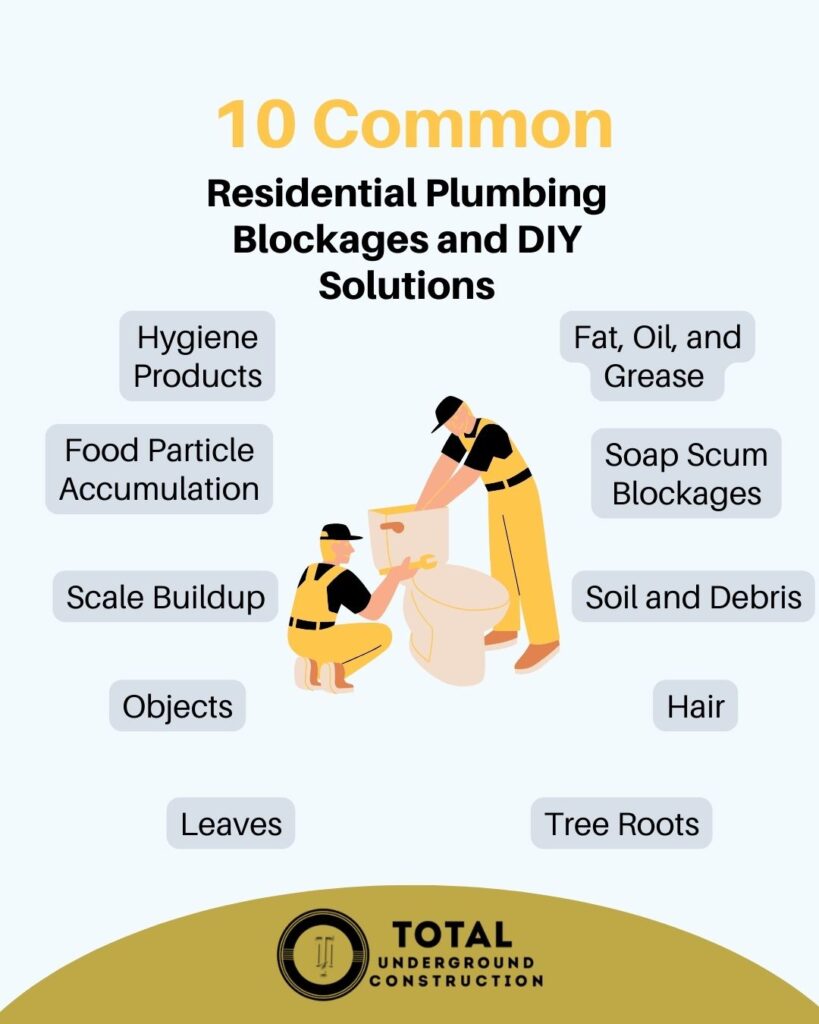
1. Scale Buildup
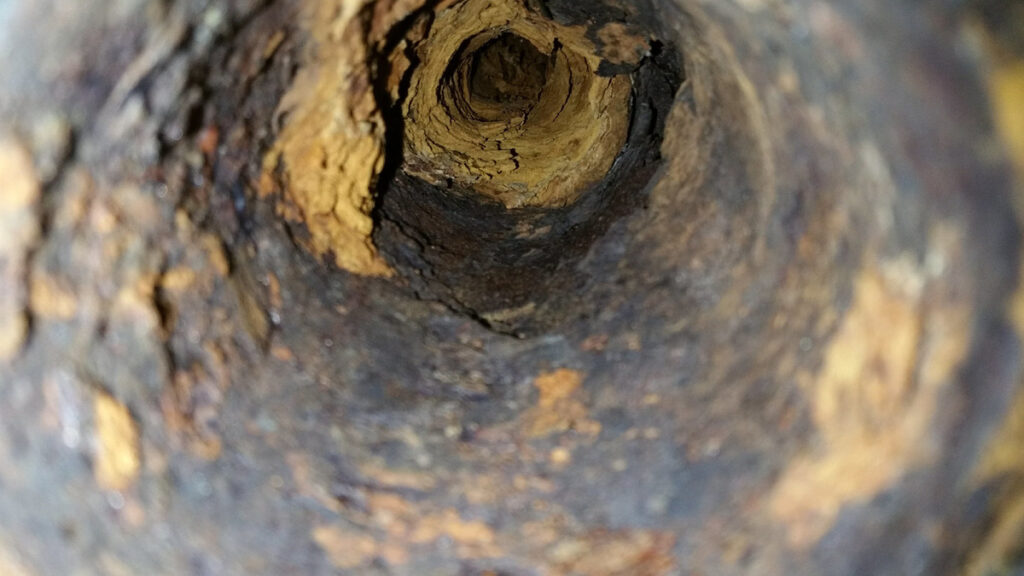
Pipes develop a hardened coating from calcium, magnesium, and potassium minerals flowing in water and drain lines. Pipes’ vulnerability to scale accumulation increases if you live in areas with hard or salty water. Scale gradually grows over time, worsening in the presence of debris, which merge to form clogs.
You can remove mild scale clogs by mixing 1/2 cup of vinegar with 1/2 cup of white vinegar. Pour the mixture down the drain and wait 30 minutes for the solution to break the scale. Then, clear the drain with hot water. Tough scales will require the intervention of a certified plumber.
2. Fat, Oil, and Grease (FOG) Buildup
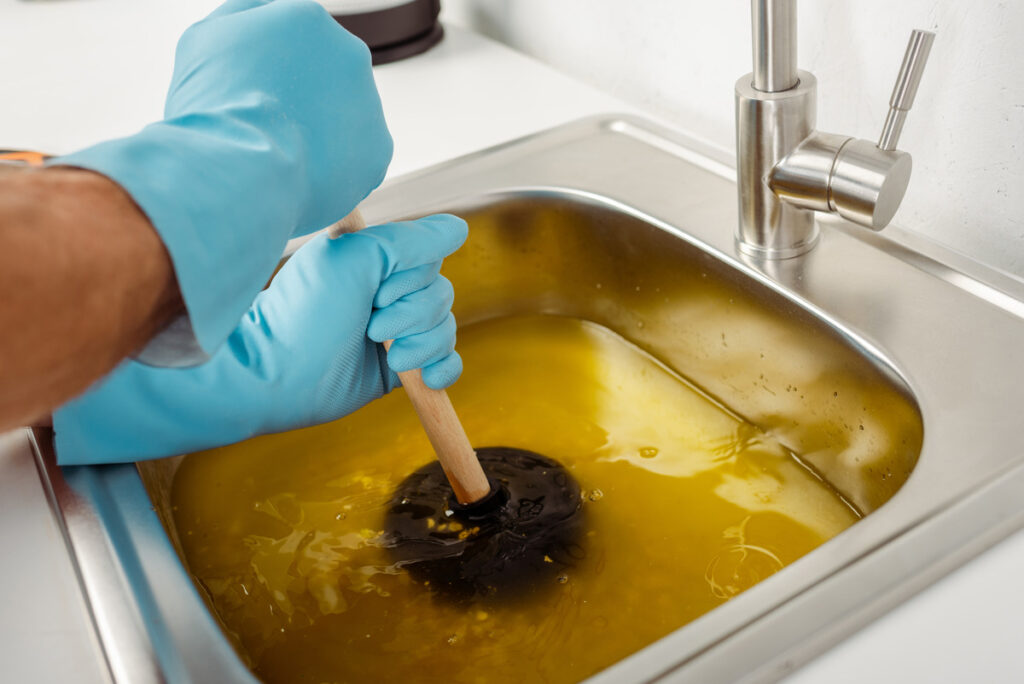
Fat, oil, and grease (FOG) buildup is a frequent cause of blockages in homes. An EPA report shows that grease from homes, restaurants, and industrial sources causes 47% of sanitary sewer overflow. The problem persists even in homes that don’t pour oil down the drain. FOGs cool and solidify on the pipe walls as they move down the drain. With time, this layer gradually accumulates, forming a hardened blockage.
You can delay FOG clogs by wiping your utensils with paper towels before washing them to keep the culprits from entering your drain. Regularly pour two cups of boiling water down your kitchen skin drain to melt solidified FOG on the wall. You can pour the baking soda-vinegar mixture on the clogged pipe. Wait 15 minutes for the mixture to break the clog, and pour a cup or two of boiled water to wash away the broken particles.
3. Food Particle Accumulation
Food particles. Those seemingly tiny crumbs contain FOGs, which cause food to cling to the pipe wall. As FOG hardens and gradually accumulates, it creates foul-smelling clogs.
Clear your utensils off any food scraps, throwing them into the trash to prevent the particles from entering your drain. Place a drain screen on your kitchen skin to block food particles before they enter the drain. If you already have food blockage and drain flow is slow, use a plunger to unblock the drain. The vinegar and baking soda mixture can also help clear stubborn food clogs.
4. Soap Scum Blockages
Bar soap resolidifies in drain pipes, forming a goopy mass over time. If your water has minerals, the rate of scum formation increases as soap reacts with the minerals in water. Soap blockages also stick to other solids and buildups in the pipeline, from hair to food particles, and scale forming into a formidable clog. It may be impossible to avoid soap scum unless you stick to using liquid soap.
You can slow down the rate of soap scum accumulation by installing drain strainers in your kitchen and bathroom drains to prevent food and hair particles from fusing with soap scum. Aerators in your faucet also slow down scum formation by enhancing lather.
5. Hair
Bathroom drains are vulnerable to hair buildup down the drain. Every time you or your loved ones shower, shave, or wash your hair, loose strands find their way into the drain. The stray strands can stick on drain line rough walls, getting entangled with other debris, scum, scale, or grease.
Hot water can loosen and dislodge entangled hair on your drain. You can also use the white vinegar and baking soda mixture before pouring hot water. Alternatively, a plunger can push the hair blockage further down the drain.
6. Hygiene Products
Contrary to popular belief, wipes, tampons, and Q-tips were never meant to be thrown down the toilet. They are one of the top toilet blockage-causing agents. Too much tissue paper can also cause minor blockages in toilet sewer lines.
A general rule of thumb to avoid frequent plumbing system blockages is that if it is not tissue paper, do not throw it in the toilet. Use a flange plunger—specially designed to clear the buildup—to clear toilet blockages. A toilet auger has a long, flexible corkscrew to grab hygiene products blocking your toilet drain.
7. Objects
If you have kids or open drains, random objects can end up in the drain by accident or sheer negligence. Toys, utensils, and buttons are typical objects that can accumulate in your pipes if you do not have screens to keep large objects and particles from entering your drain system.
If the object is within reach, a pair of tongs or pliers can help you retrieve it before it travels deep into the drain line. You can also straighten a wire hanger, bend it on the retrieval end, and pull the object from the pipe.
8. Soil and Debris
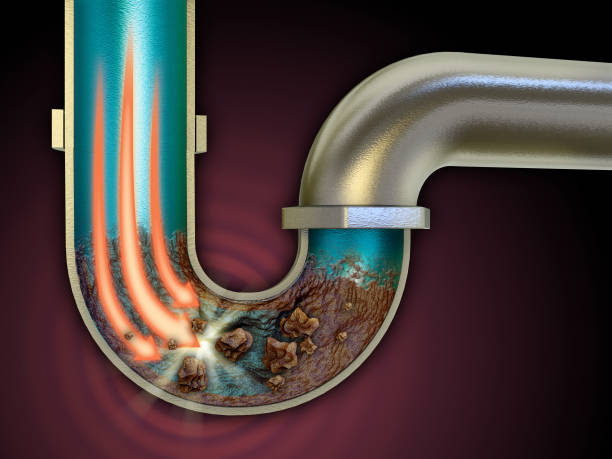
The likelihood of mud, soil, and debris clogging your drain increases during the rainy season, especially if you have open drains outside your home. Gradual dirt accumulation can form a compact blockage that interferes with wastewater or drain flow.
Covering your outdoor drains can prevent soil blockages. Inspect and clean your drain regularly to remove dirt accumulating in the pipes. If you find a clog, work with a professional plumber to remove it without damaging your drain pipes.
9. Leaves
Autumn leaves from your gutter can find themselves in your drain. Over time, the leaf accumulation can compact, forming a blockage. You can avoid leaf blockages by cleaning your plumbing system regularly.
If your drainage is slow, check if the leaf blockage is visible. Wear gloves and remove the leaves. You can also scoop the decomposing leaves with a garden trowel.
10. Tree Roots
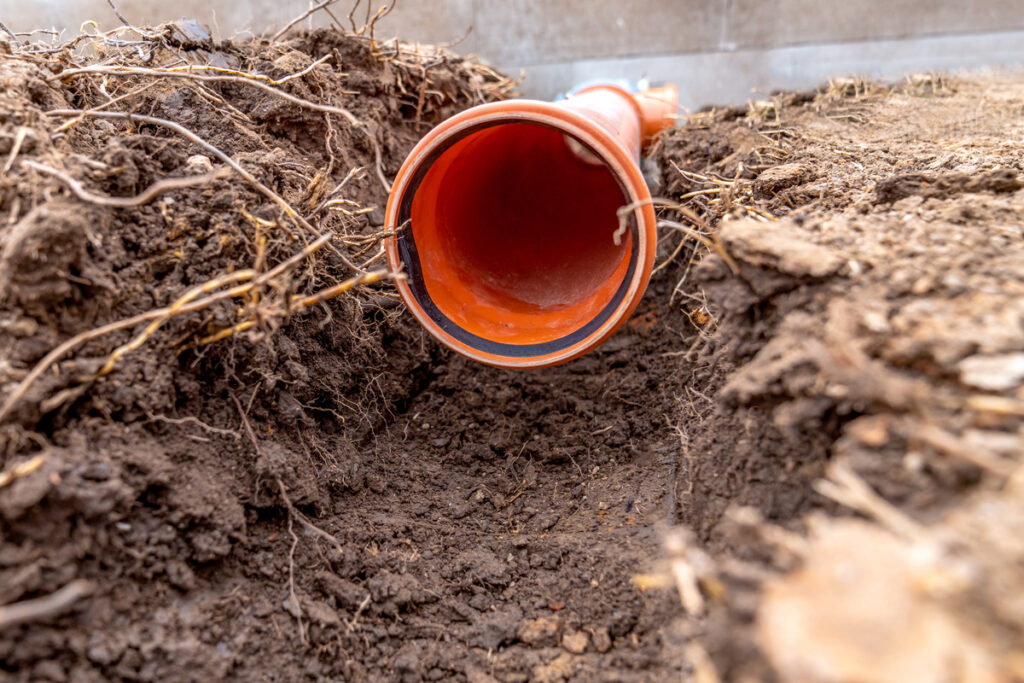
Old plumbing systems are vulnerable to root intrusion because the structural integrity of the worn-out pipes easily crumbles and fractures from the force exerted by intruding roots. The spaces between old clay drain lines connected with concrete are also high-risk areas for root intrusion.
You can use chemicals like copper sulfate or rock salt to kill the roots. However, this may harm the ecosystem and damage your pipes. Unfortunately, there is no environmentally friendly DIY method for removing tree roots from your drain. Hiring a professional plumber is a safe and cost-effective solution.
Hire Total Underground Construction For Expert Blockage Solutions
Regular drain cleaning is the most straightforward maintenance practice to avoid blockages that could lead to fractures or pipe bursts. Leaks interfere with flow pressure, heightening contamination risks through underground seepage of dirt and pathogens, especially in potable water lines. They also waste water when they occur in potable water lines, leading to escalating utility bills. Worse still, drain and sewer line leaks can produce foul odors and become potential hazards for spreading diseases.
At Total UC, we consider the type of clog and your plumbing system infrastructure when tailoring blockage solutions. We use minimally invasive technologies and equipment for comprehensive plumbing blockage removal while gently handling your plumbing system. Our process begins with in-depth video inspections, accurate diagnosis, and curated solutions to unblock your plumbing system. Call us today for business.


